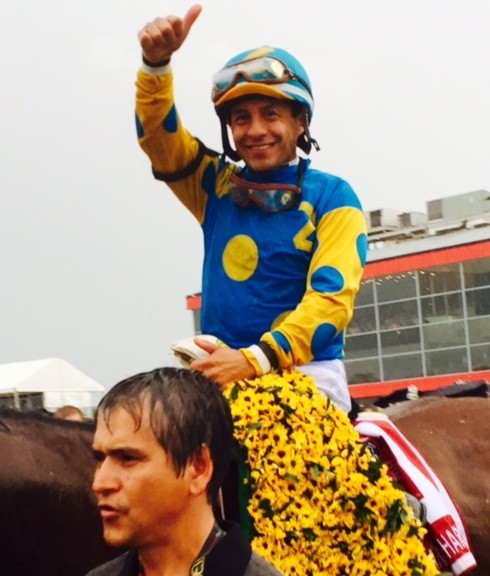Since Affirmed beat Alydar yet again to take the Triple Crown in 1978, 13 horses have come to Belmont with a chance to join the most exclusive club in Thoroughbred Racing. Now its American Pharoah’s turn. In the words of George Santayana, “those who cannot remember the past are condemned to repeat it.” American Pharoah has a lot of take-aways from the last 13 failed Triple Crown attempts. It might be June, but for American Pharoah, school is in session.
Track bias appear all over America. Some are inherent and exist nearly everyday, example: speed at Monmouth. Some can be man-made, example: the golden rail at Churchill 2011 Breeders’ Cup, thanks Butch. Others are the result of natural forces, example: a speed bias can result on some sloppy tracks. Still others are a combination of forces, example: the speed bias often found on the inner turf at Saratoga. However, regardless of how the bias is created, it is vitally important to any Triple Crown hopeful to be aware of them and change your plans accordingly to avoid becoming another statistic.
In 2003, Funny Cide came into the Belmont after dominating the Preakness by 9+ lengths, and beating the lauded Frankel duo of Empire Maker and Peace Rules in the Derby. When he came home to Belmont, he was greeted with a small, but fierce field of five rivals and a rain storm.
Early on in the day at Belmont, it became apparent that the rail was dead. As the track was crowned, it was having a difficult time draining on the lower sections closest to the rail. This added water made the surface heavier and thicker, and thus more laborious to get through. No horses in the early races were making up ground on the rail down the stretch, often fading when they appeared to be in contention.
When Funny Cide burst through the gate on top, Jose Santos was forced to change his tactics and he let Funny Cide run for the lead. However, the big lesson here is that he allowed himself to be forced down to the rail by Empire Maker and Jerry Bailey. Bailey, who relished the role of spoiler, noted before the race that it was his goal to make Funny Cide uncomfortable and tire him out. Baily’s plan worked perfectly, as not only did Empire Maker pressure Funny Cide, he moved him in towards the slower deeper surface at the rail.
As Funny Cide came around the far turn, his quest for immortality appeared over. He was laboring more than Empire Maker, who appeared to be skipping over the surface on his outside, where it was lighter. It will never be known whether it was Bailey’s design or Santos’ error that put Funny Cide on the dead rail, but it is certain that it played a huge factor in his defeat.
What Victor Espinoza and American Pharoah can take from this is to be aware of any bias during the day. Watch the earlier races, see if there are paths that appear to be running better. See if speed is dominating the day. What works well for Pharoah is that he is versatile, so a track bias does not hurt him as much. If speed is winning, he can go to the front like he did in the Preakness. If closers dominate, he can sit off the pace and make a run in the stretch like he did in the Derby.
However, it is most critical to watch the races, watch the weather and know how the track is playing. Those who do not appreciate history are doomed to repeat it. Good Luck A.P.

